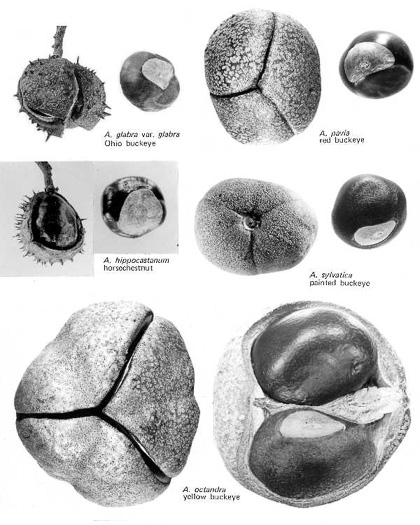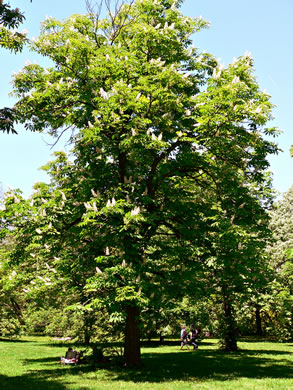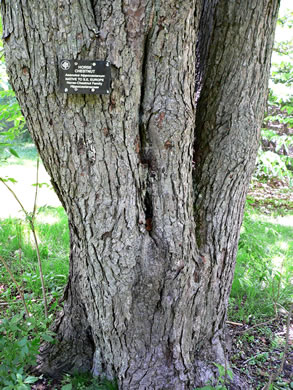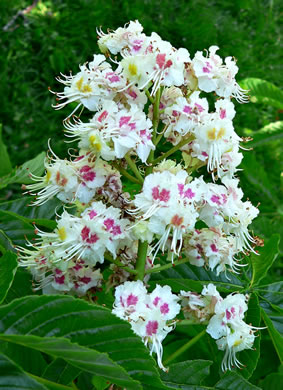Spermatophytes (seed plants): Angiosperms (flowering plants): Eudicots: Core Eudicots: Rosids: Malvids: Sapindales
WEAKLEY'S FLORA OF THE SOUTHEASTERN US (4/24/22):
Aesculus hippocastanum
FAMILY
Sapindaceae
Go to FSUS key
Dig deeper at SERNEC, a consortium of southeastern herbaria.
Read more about Horsechestnut at Vascular Plants of North Carolina.
SYNONYMOUS WITH
PLANTS NATIONAL DATABASE:
Aesculus hippocastanum
FAMILY
Hippocastanaceae
SYNONYMOUS WITH Floristic Synthesis of North America. BONAP (Kartesz, 2021)
Aesculus hippocastanum
COMMON NAME:
Horsechestnut
To see larger pictures, click or hover over the thumbnails.
Richard and Teresa Ware rtw_a_hippocastanum_2
May Suffolk County MA
Arnold Arboretum
A tree 50-75' tall, usually a spread of 40-70'. Can grow to 100' or taller, per Manual of Woody Landscape Plants (Dirr, 1975+).
Richard and Teresa Ware rtw_a_hippocastanum_c
August
Flowers white with a blotch of yellow at the base which turns reddish, per Manual of Woody Landscape Plants (Dirr, 1975+).
WEAKLEY'S FLORA OF THE SOUTHEASTERN US (4/24/22):
Aesculus hippocastanum
FAMILY
Sapindaceae
SYNONYMOUS WITH
PLANTS NATIONAL DATABASE:
Aesculus hippocastanum
FAMILY
Hippocastanaceae
SYNONYMOUS WITH
Floristic Synthesis of North America. BONAP (Kartesz, 2021)
Aesculus hippocastanum
If a search such as "Carex leptalea var. leptalea" doesn't deliver the results you want, try "Carex leptalea".
Or, to minimize chances of a misspelling, try just "Carex le".
Less is more: If "pencil flower" doesn't deliver the results you want, try "pencil".





